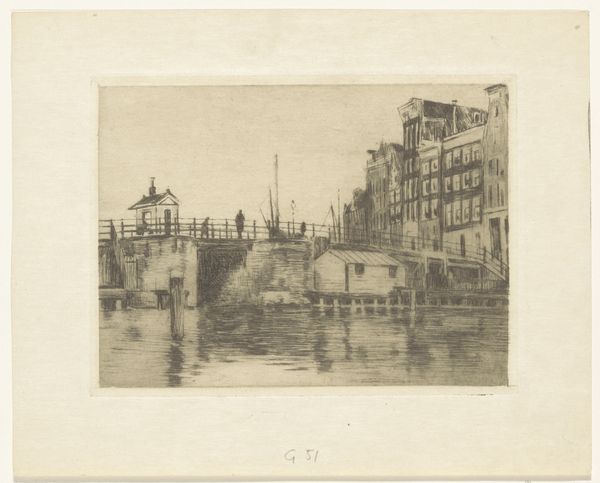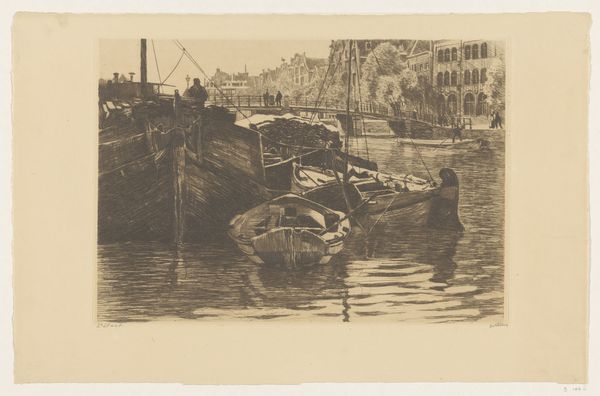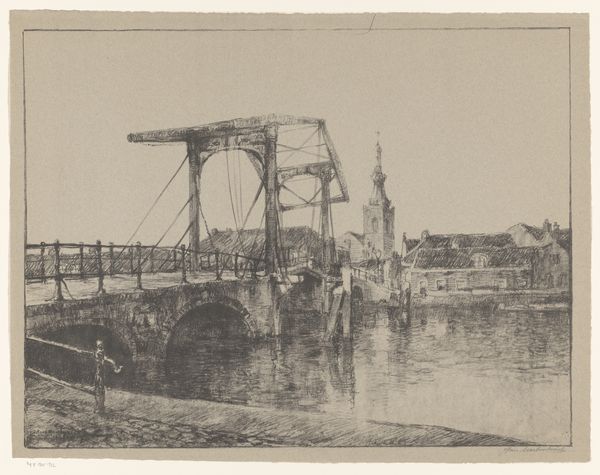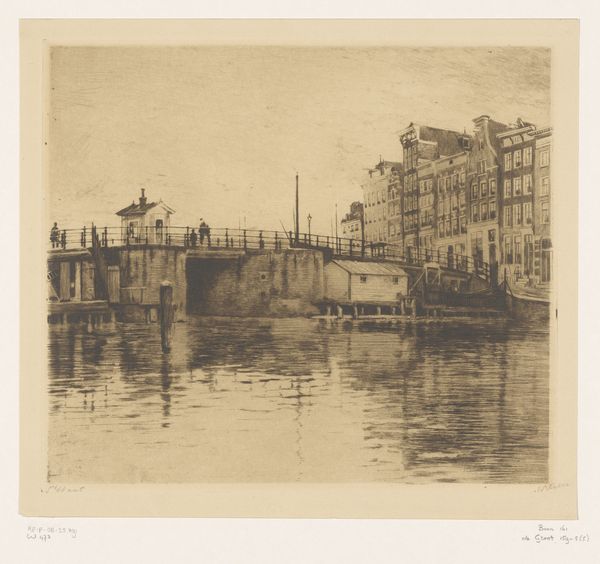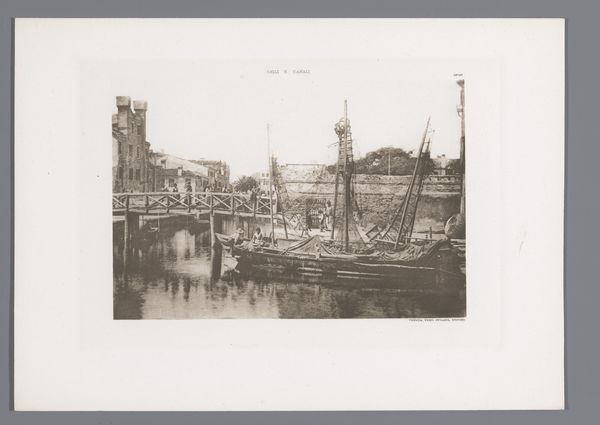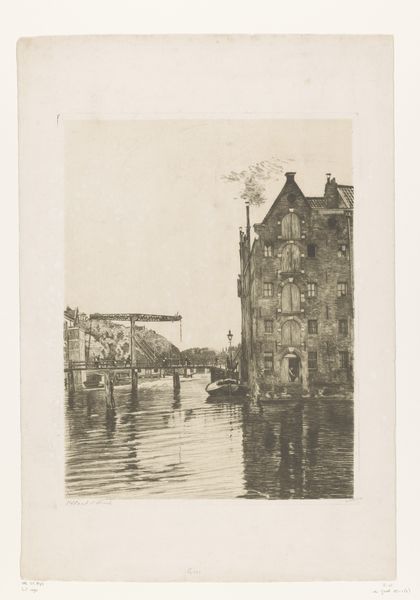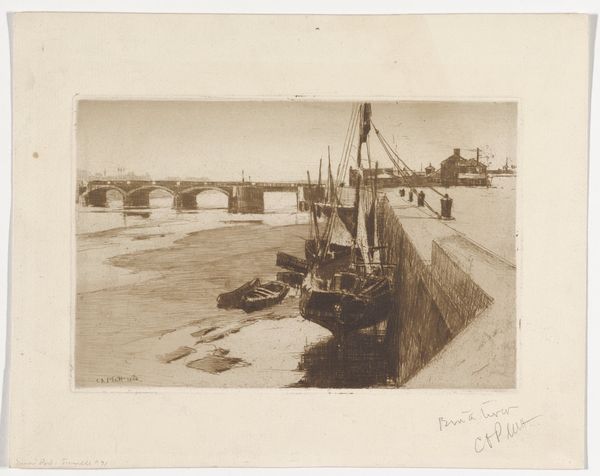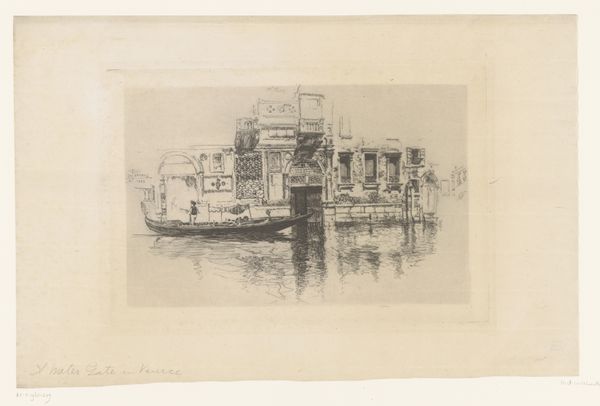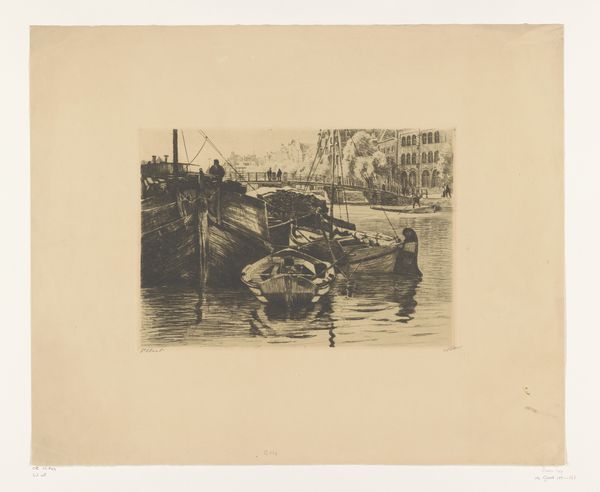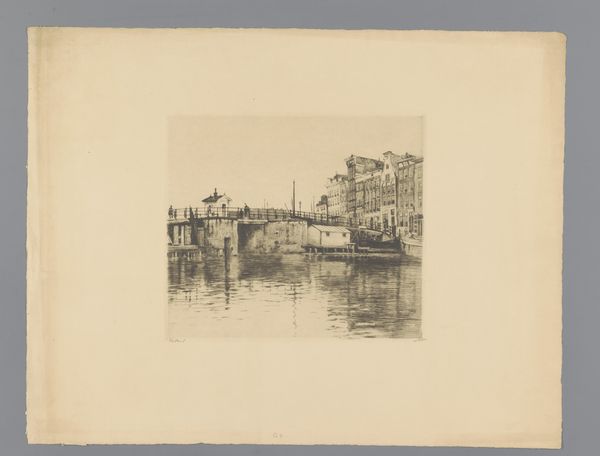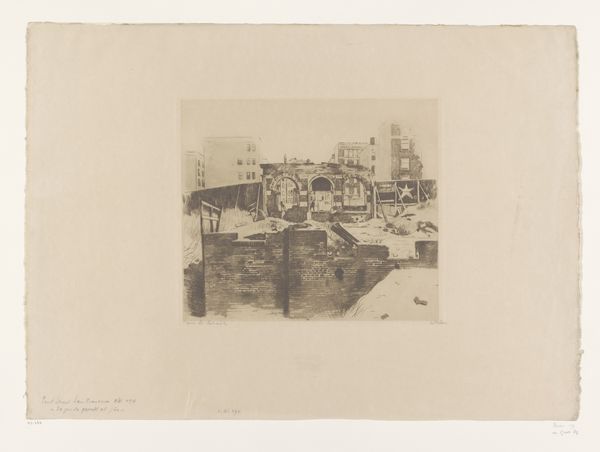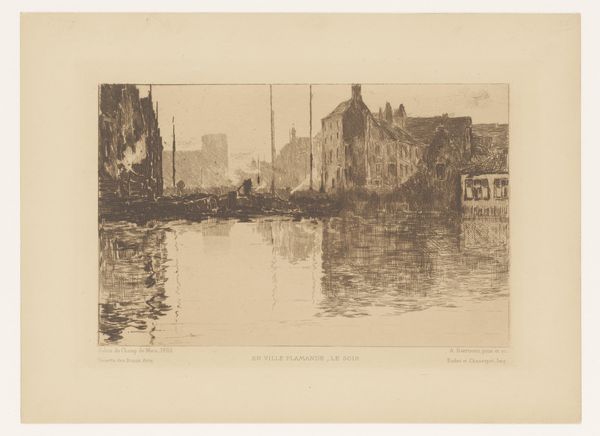
#
aged paper
#
homemade paper
#
pale palette
#
ink paper printed
#
sketch book
#
personal sketchbook
#
watercolour illustration
#
paper medium
#
sketchbook art
#
watercolor
Dimensions: height 454 mm, width 588 mm
Copyright: Rijks Museum: Open Domain
Curator: Salomon Garf painted this work in 1929, a watercolor on paper depicting the Magere Brug in Amsterdam. Editor: Immediately, I’m struck by the stillness of the scene. It feels like time has stopped here. There’s a real sense of melancholy, even sadness. Curator: Observe the pale palette, almost monochromatic, which enhances the subtle linear quality defining the bridge’s architecture and the rigging of the boats. Consider the careful arrangement of forms and shapes to achieve balance and depth. The lines are spare, yet effective. Editor: And note the vantage point. We are placed not as observers in the city, but as participants on the water. Garf, here, asks us to consider our relationship to urban infrastructures – and perhaps, too, how the urban interacts with bodies moving in a more traditionally "natural" space. Curator: Precisely. Garf masterfully employs contrast in tones to delineate form. The meticulous detail in the bridge's framework contrasts sharply with the flowing reflections in the water. The architectural solidity opposes its watery reflection, which, as you note, encourages contemplation. Editor: Given that this scene takes place in Amsterdam, there’s also an unavoidable dialogue about commerce, trade and colonialism that the artist tacitly invokes here, specifically between Amsterdam and former Dutch colonies across the globe. After all, water meant trade, but trade brought oppression and exploitation too. Curator: Perhaps the most compelling quality is its timelessness. Although created in 1929, the overall aesthetic speaks across temporal boundaries. It allows observers a peek into Amsterdam’s past and a simultaneous point of entry for reflection on enduring societal structures. Editor: Yes, exactly. I think the artwork makes us aware of our present in relation to the past. There's a dialogue between temporality, identity and political critique made through the artist's aesthetic choices, and the formal composition of Garf’s art encourages active interpretation by its audience. Curator: Well, it gives us plenty to consider when regarding something so seemingly straightforward as a simple bridge scene! Editor: Indeed. "Simple" it may seem, but profoundly relevant across the decades, reminding us of layered urban and social textures as we navigate the same spaces.
Comments
No comments
Be the first to comment and join the conversation on the ultimate creative platform.
